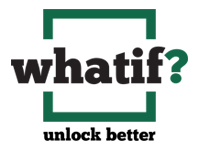
“Enhancing Team Effectiveness with Zero-Gravity Thinking”
When team members are not bound by the usual limitations of their job descriptions, they experience a significant increase in creative production. This freedom encourages risk-taking and original thinking, which is crucial for breakthrough innovations.
Welcome to this week’s Whatif? Wednesday Thought Letter. Today, we’ll dive into how 3M’s 15% Culture and Pixar’s Braintrust exemplify zero-gravity thinking, pushing the boundaries of traditional work roles to foster a culture of innovation and autonomy.
Breaking Down Barriers
In many organizations, inflexible structures and rigid job roles limit creative exploration. 3M’s 15% Culture breaks these boundaries by encouraging employees to spend up to 15% of their work time on projects unrelated to their primary job functions, which has led to some of their most noteworthy products. This initiative allows individuals to explore new technologies, experiment with different ideas, and innovate outside formal assignments.
The Impact of 15% Time
Initiatives like 3M’s 15% Culture create time for original thought, idea exploration, and developing psychological safety—a key element in fostering creative environments. Employees feel supported in their pursuits, knowing their explorations are valuable to the organization, whether they do or do not lead directly to product outputs. When team members are not bound by the usual limitations of their job descriptions, they experience a significant increase in creative production. This freedom encourages risk-taking and original thinking, which is crucial for breakthrough innovations.
Pixar’s Braintrust
Similarly, Pixar’s Braintrust sessions exemplify zero-gravity thinking in team dynamics. Here, teams come together in a hierarchy-free environment where any project detail can be critiqued constructively. This process ensures that the best ideas are identified and developed regardless of origin, fostering a culture of continuous improvement, creative excellence, and producing commercially successful films.
Fostering Intrinsic Motivation
Both 3M and Pixar tap into the power of intrinsic motivation through zero-gravity thinking. Simply put, employees who feel they can directly influence their work and environment are more engaged, satisfied, and productive. Zero-gravity thinking helps people break from the constraint of business-as-usual thinking and develop a sense of ownership and autonomy. It’s a powerful motivator and has led to notable innovations like 3M’s Post-it Notes, which originated from an employee’s side project.
Collaborative Synergy
Zero-gravity thinking environments encourage a fusion of diverse perspectives and expertise. Allowing individuals from different backgrounds to collaborate freely fosters an environment where unconventional ideas can flourish. Cross-functional leadership is crucial in nurturing this environment, ensuring that all team members feel valued and that their ideas are worth exploring. The success and authenticity of such programs hinge on consistent support from all levels of management and the genuine incorporation of these practices into the company’s day-to-day operating environment.
Conclusion
What if you adopted a zero-gravity initiative like 3M’s 15% Culture and Pixar’s Braintrust? Could zero-gravity thinking transform your team dynamics and drive organizational innovation? Could you create an environment where team members can explore their passions and ideas while benefiting the organization through increased innovation and engagement? This approach would allow your organization to break from conventional thinking and foster a dynamic, creative, and effective team environment. The outcome will benefit all key stakeholders: investors, customers, and employees. When considering such initiatives, the key to success lies in real commitment, not just nominal adoption.
In next week’s Thought Letter, we’ll discuss how zero-gravity thinking can elevate your growth from good to extraordinary.
Stay curious.


Leave a Reply